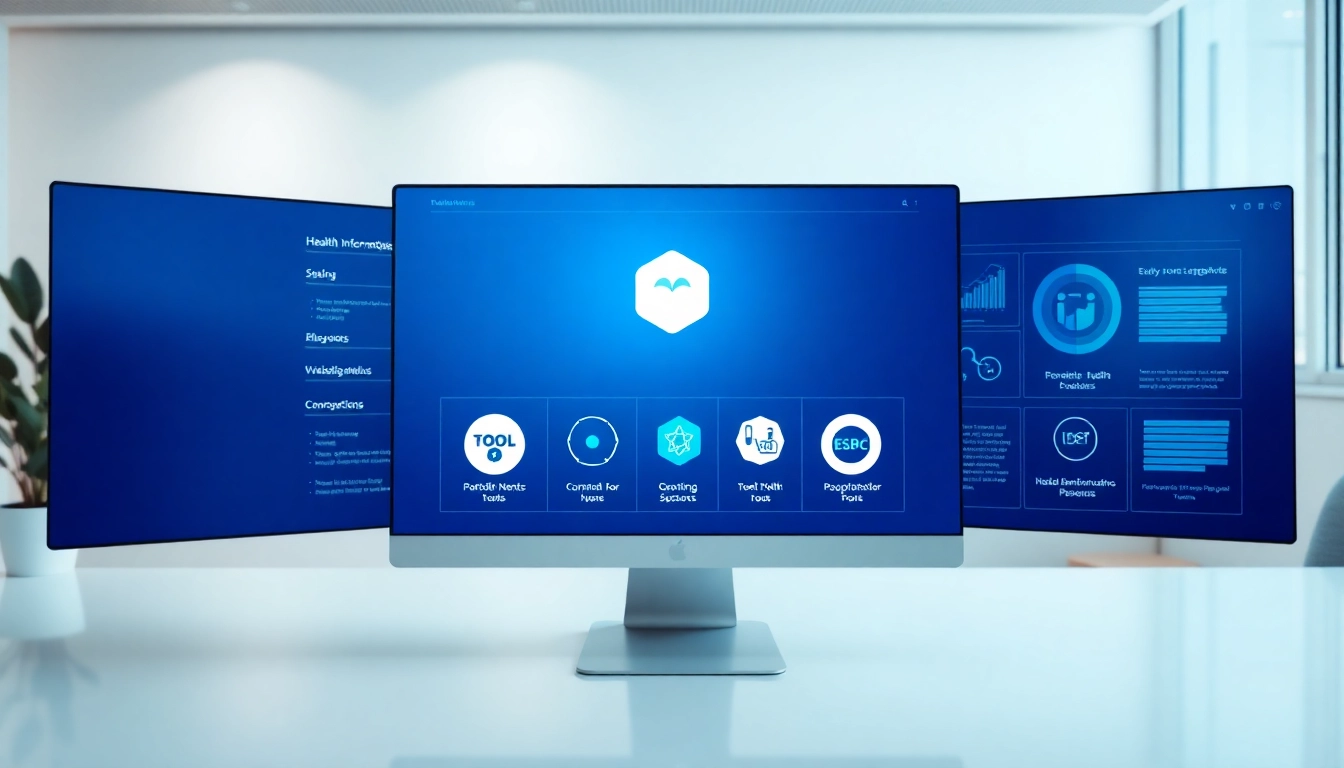Understanding Informatics in Healthcare
Informatics is revolutionizing healthcare by merging data, information, and technology to enhance patient care and overall health outcomes. As we delve deeper into the realm of informatics, it’s essential to embrace its multifaceted nature and understand how its principles can significantly improve healthcare delivery. From managing electronic health records to utilizing cutting-edge technology for patient engagement, the impact of informatics is profound and far-reaching. You can explore more resources related to this topic on www.informaticsview.com, where you will find a wealth of information on the latest trends and practices.
Definition of Informatics
Informatics can be broadly defined as the science of how to use data, information, and knowledge to improve human health and the delivery of healthcare services. It encompasses various sub-disciplines such as health informatics, clinical informatics, and bioinformatics. The crux of informatics lies in the effective management of information systems to facilitate better decision-making and care delivery. By integrating information technology in healthcare, informatics aims to enhance clinical practices and patient outcomes, leveraging data analytics and digital tools for continuous improvement.
History and Evolution of Health Informatics
The field of health informatics has drastically evolved over the decades. It originated in the mid-20th century, paralleling advancements in computer science and an increasing focus on public health improvements. Initially, health informatics centered around manual record-keeping and basic statistical analyses. However, as technology progressed, the development of electronic health records (EHRs) commenced, marking a pivotal shift towards digitization.
In the 1970s, the introduction of integrated databases for patient information set the groundwork for future innovations. By the 1990s, the advent of the internet further transformed health informatics, enabling healthcare professionals to share information rapidly and access vast digital resources. Today, the field continues to expand, incorporating artificial intelligence (AI), machine learning, and natural language processing, which are reshaping the delivery of healthcare services.
Importance of Data Management
Data management is critical in healthcare informatics, as it ensures the accurate storage, retrieval, and analysis of health information. The significance of effective data management lies in its ability to enable clinicians to make informed decisions based on real-time data. Moreover, with the increasing amount of data generated daily through EHRs, wearables, and clinical trials, the ability to effectively manage and analyze this data becomes paramount.
Quality data management helps in identifying trends, improving patient outcomes, and facilitating research. Proper data management practices also comply with regulatory standards such as HIPAA (Health Insurance Portability and Accountability Act), safeguarding patient privacy and security in an increasingly digital world. Implementing structured data management systems allows healthcare organizations to streamline workflows and enhance patient care significantly.
Core Components of Health Informatics
Electronic Health Records (EHRs)
Electronic Health Records (EHRs) form the backbone of health informatics. EHRs are comprehensive digital records that consolidate patient information, encompassing medical history, medications, laboratory results, radiology images, treatment plans, and more. These records are designed to be shared across different healthcare settings, ensuring that clinicians have immediate access to the most relevant and up-to-date patient information.
The implementation of EHRs leads to substantial improvements in care coordination, patient safety, and efficiency. For example, EHR systems reduce the risk of medication errors by alerting clinicians to potential allergies or interactions. Moreover, EHRs facilitate easier patient engagement through patient portals, allowing individuals to access their health information and communicate with their healthcare team.
Wind-downs inherent in EHR adoption include the initial costs of implementation and the need for proper training, but the long-term benefits of improved data accessibility and patient outcomes justify the investment.
Clinical Decision Support Systems (CDSS)
Clinical Decision Support Systems (CDSS) are tools that utilize patient data to provide healthcare professionals with evidence-based guidance at the point of care. These systems analyze vast databases of clinical knowledge and patient records to assist in diagnosing conditions, predicting patient outcomes, and suggesting treatment options.
CDSS can take various forms, such as reminders for preventative screenings, alerts on potential drug interactions, or suggestions for clinical pathways. As healthcare increasingly shifts towards personalized medicine, the role of CDSS in supporting individualized patient care becomes integral. Furthermore, these systems can enhance clinical efficiency, reduce errors, and improve adherence to clinical guidelines, ultimately leading to better patient outcomes.
Despite their advantages, integrating CDSS into everyday clinical practices poses challenges, including clinician resistance and concerns about over-reliance on technology. Overcoming these challenges necessitates proper training and experiences to promote user trust and confidence in decision support tools.
Health Information Exchange (HIE)
Health Information Exchange (HIE) refers to the electronic sharing of health-related information among organizations and systems. HIE facilitates a comprehensive view of a patient’s health history by connecting disparate EHR systems, enabling the exchange of data across different healthcare providers and institutions.
The primary benefits of HIE include improved care coordination, reduced duplication of tests, and enhanced public health reporting. For example, if a patient visits an emergency department, healthcare providers can access the patient’s previous health records, eliminating guesswork and ensuring informed decision-making during care.
Implementing HIEs can be complex due to interoperability challenges, regulatory considerations, and the need for governance frameworks that protect patient privacy. Utilizing standardized data formats and protocols can help ease these challenges, fostering a collaborative environment among healthcare providers and ultimately benefiting patients.
Applications of Informatics in Patient Care
Using Technology for Patient Engagement
Patient engagement is a crucial aspect of modern healthcare, and informatics plays a vital role in enhancing this engagement through technology. Digital tools such as patient portals, mobile health applications, and telemedicine platforms empower patients to take charge of their health by providing them access to their health data, educational resources, and communication channels with their healthcare providers.
Effectively designed patient engagement tools improve health literacy and facilitate better health decision-making. For instance, applications that allow patients to track their symptoms can help clinicians tailor treatment plans based on real-time patient feedback. Moreover, engaging patients in their care fosters adherence to treatment plans and encourages preventative health measures, ultimately leading to improved health outcomes.
Nonetheless, it is essential to consider the digital divide and ensure that engagement strategies are inclusive, addressing the needs of underserved populations who may have limited access to technology or health care.
Enhancing Clinical Workflows
Informatics can significantly optimize clinical workflows, leading to improved efficiency and reduced administrative burdens on healthcare professionals. Streamlining processes through the implementation of EHRs, automated scheduling systems, and task management tools allows healthcare providers to focus more on patient care rather than administrative tasks.
For instance, integrating EHRs with appointment scheduling systems ensures that all relevant information is readily available to clinicians, reducing delays during patient visits. Additionally, employing data analytics to monitor workflow performance can identify bottlenecks and areas for improvement, allowing for targeted interventions.
An essential aspect of enhancing clinical workflows is fostering an organizational culture that embraces continuous improvement. Regular training and feedback sessions can help identify inefficiencies and encourage staff to adopt best practices in workflow management.
Telemedicine and Remote Monitoring
Telemedicine has surged in popularity, especially during the COVID-19 pandemic, and is a prime example of how informatics can transform patient care. Telehealth facilitates remote consultations with healthcare providers through virtual platforms, allowing patients to receive care from the comfort of their homes. This approach is particularly valuable for individuals with limited mobility or those in remote areas with limited access to medical facilities.
Remote monitoring technologies, such as wearable health devices and mobile health applications, play an essential role in telemedicine. These devices collect real-time health data, enabling healthcare providers to monitor patients continuously and intervene proactively when necessary. For example, remote monitoring can effectively manage chronic conditions such as diabetes or hypertension by providing physicians with crucial information to adjust treatment plans promptly.
Despite the benefits, telemedicine faces challenges regarding technology integration, reimbursement policies, and regulatory constraints. Addressing these issues will require collaboration among stakeholders to ensure that telemedicine becomes an integral part of the healthcare continuum.
Challenges in Implementing Health Informatics
Data Security Concerns
As healthcare organizations increasingly adopt digital solutions, data security becomes a pressing concern. Vulnerabilities in health IT systems can lead to unauthorized access, data breaches, and potential loss of sensitive patient information. Ensuring robust data security measures is essential to maintaining patient trust and compliance with regulations such as HIPAA.
To mitigate risks, healthcare organizations should invest in advanced cybersecurity solutions, provide regular training for staff on data protection practices, and develop comprehensive incident response plans. Continuous monitoring and assessment of security protocols can ensure that organizations remain vigilant against evolving cyber threats, ultimately safeguarding patient data.
Integration Across Systems
Integration across various EHR and health IT systems remains a significant challenge in health informatics. Disparate systems and lack of standardization can lead to data silos, where critical information resides in separate systems, hindering effective data exchange and care coordination.
Facilitating interoperability requires adopting standardized data formats, protocols, and APIs (Application Programming Interfaces) that enable seamless data exchange among systems. Collaborative efforts among stakeholders, including healthcare providers, IT vendors, and regulatory bodies, will be essential to create a more interconnected healthcare ecosystem.
Training Healthcare Professionals
Despite the incredible potential of health informatics, the successful implementation of these systems significantly relies on the competence and adaptability of healthcare professionals. Training programs play a crucial role in equipping clinicians and staff with the necessary skills to leverage informatics tools effectively.
Comprehensive training initiatives should address not only technical proficiency in using health IT systems but also the changes in clinical workflows that accompany the adoption of new technologies. Ongoing education and support can foster a culture of learning and innovation, preparing healthcare professionals to harness the benefits of informatics and provide superior patient care.
Future Trends in Health Informatics
Artificial Intelligence in Healthcare
Artificial Intelligence (AI) is emerging as a powerful tool in health informatics, with the potential to revolutionize various aspects of patient care. From predictive analytics that identify at-risk patients to natural language processing algorithms that streamline documentation, AI capabilities are enhancing the efficiency and accuracy of healthcare delivery.
AI-powered tools can help clinicians interpret medical images, assist in diagnostic decisions, and even optimize personalized treatment plans through data-driven insights. As research continues to advance in AI applications, the accuracy and reliability of these systems will likely improve, resulting in better patient outcomes.
Despite the immense promise AI holds, ethical considerations, including bias in algorithms and data privacy concerns, must be thoroughly addressed to ensure equitable and responsible implementation.
Predictive Analytics for Patient Outcomes
Predictive analytics in healthcare harnesses the power of vast amounts of patient data to forecast outcomes and guide clinical decisions. By analyzing historical data trends, healthcare organizations can identify patients at risk of developing certain conditions, potentially allowing for timely interventions and improved health outcomes.
For example, predictive analytics can aid in identifying patients who may be readmitted following discharge, allowing healthcare providers to target high-risk individuals with tailored follow-up care. Furthermore, data-driven insights can assist in resource allocation and capacity planning, leading to more efficient healthcare delivery.
Incorporating predictive analytics into daily practice involves collaboration among data scientists, clinicians, and IT professionals to ensure accurate data collection, interpretation, and application in clinical settings.
Interoperability in Health Technologies
The future of health informatics hinges on achieving true interoperability among diverse health technologies. This goal involves breaking down data silos and creating seamless communication channels between EHR systems, telehealth platforms, and wearable devices. Interoperability allows healthcare providers to access comprehensive patient information, improving care coordination and patient safety.
Efforts towards enhancing interoperability will require the establishment of common standards and protocols that promote data exchange. Initiatives such as the Fast Healthcare Interoperability Resources (FHIR) are making strides in this direction by standardizing data formats across various healthcare applications.
In conclusion, achieving interoperability among health technologies will improve care delivery, enhance decision-making, and ultimately lead to better health outcomes for patients. It also plays a critical role in creating a more patient-centered healthcare ecosystem, where seamless data exchange is the norm rather than the exception.



